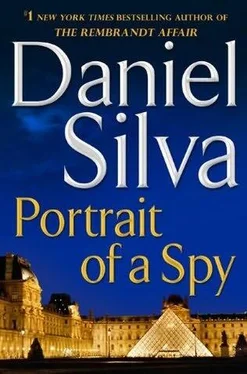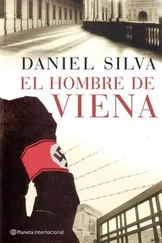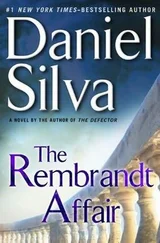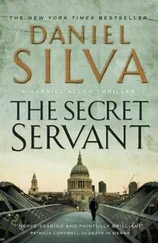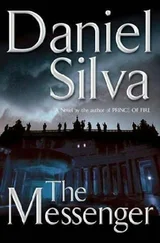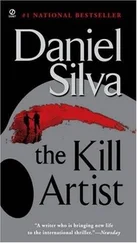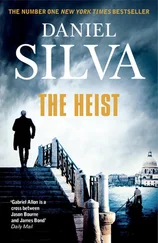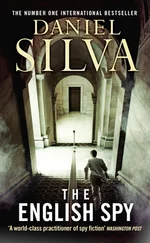He was standing before the canvas with one hand pressed to his chin and his head tilted slightly to one side. Nadia glowed under the intense white light of the halogen work lamps. It was a portrait of an unveiled woman. A portrait of a martyr. A portrait of a spy.
Shamron watched Gabriel for several minutes without speaking. Finally, he asked, “Is it finished, my son?”
“Yes, Abba,” replied Gabriel after a moment, “I think it is.”
The shippers came the next morning. By the time Gabriel returned from his walk along the cliffs, Shamron had gone. It was better that way, he told Chiara before leaving. The last thing Gabriel needed now was another messy scene.
IT WAS SARAH BANCROFT’S IDEA to hold the gala opening of the Nadia al-Bakari wing on the anniversary of 9/11. The head of New York’s Joint Terrorism Task Force suggested it might be wiser, given the current level of Middle East unrest, if she chose a less symbolic date, but Sarah held firm. The event would be held the evening of September 11. And if the task force couldn’t find a way to secure it, Sarah knew people who could.
The demonstrators arrived for the party early, jamming West Fifty-third Street by the thousands. Most were feminists and human rights activists who supported Nadia’s goals of sweeping change in the Middle East, but a few wild-eyed jihadis from Brooklyn and New Jersey showed up to denounce her as a heretic. None seemed to notice Gabriel and Chiara as they stepped from the back of an Escalade and slipped into the museum. A security guard escorted them upstairs to MoMA’s business offices, where they found Sarah struggling with the zipper of her evening gown. Everywhere there were stacks of MoMA’s official monograph for the collection. Gabriel’s portrait of Nadia was on the cover.
“You pushed us to the limit,” Sarah said, kissing his cheek. “We almost had to go with a backup cover.”
“I had a bit of difficulty making a few final decisions.” Gabriel looked around the large office. “Not bad for a former curator from the Phillips Collection. I hope your colleagues never find out about the little sabbatical you took after leaving Isherwood Fine Arts in London.”
“They’re under the impression I spent several years engaged in a private course of study in Europe. The hole in my provenance seems to have only added to my allure.”
“Something tells me your love life will be much improved.” He glanced at her dress. “Especially after tonight.”
“It’s Givenchy. It was scandalously expensive.”
“It’s beautiful,” said Chiara, helping Sarah with the zipper, “and so are you.”
“It’s funny how different the world looks when you’re not sitting in a dark room at Langley tracking the movements of terrorists.”
“Just don’t forget they’re out there,” Gabriel said. “Or that some of them know your name.”
“I suspect I’m the most carefully watched museum curator in the world.”
“Who’s handling it?”
“The Agency,” said Sarah, “with help from the joint task force. I’m afraid they’re rather annoyed with me at the moment. So is Adrian. He’s trying to find some way of keeping me on the payroll.”
“How is he?”
“Much better now that James McKenna has left the White House.”
“Did he land on his feet?”
“According to the rumor mill, he’s going to the Institute of Peace.”
“I’m sure he’ll be very happy there.” Gabriel picked up a copy of the monograph and examined the cover.
“Would you like to see the real thing before the crowd arrives?”
He looked at Chiara. “Go,” she said, “I’ll wait here.”
Sarah led him downstairs to the entrance of the al-Bakari wing. The caterers were laying out tables of canapés and opening the first bottles of champagne. Gabriel walked over to Nadia’s portrait and read the biographical plaque mounted next to it. The description of the circumstances surrounding her death was far from accurate. Her father was described only in passing.
“It’s not too late,” said Sarah.
“For what?”
“To sign your name to the painting.”
“I considered it.”
“And?”
“I’m not ready to be a normal person. Not yet.”
“I’m not sure I’m ready, either. But at some point . . .” Her voice trailed off. “Come,” she said, leading him through a passageway, “you have to see the rest to believe it. Our old friend Zizi had remarkable taste for a terrorist.”
They walked alone through rooms hung with paintings, Sarah in her evening gown, Gabriel in his black tie. In another time, they might have been playacting in one of Gabriel’s operations. But not now. With Nadia’s help, Gabriel had returned Sarah to the world where he had found her, at least for the moment.
“There’s more,” she was saying, gesturing toward a wall hung with Monet, Renoir, Degas, and Sisley. “Much more. We can only display about a quarter of what Nadia gave us. We’re already making arrangements to lend portions of the collection to museums around the world. I think Nadia would have liked that.”
They entered a room hung with paintings by Egon Schiele. Sarah walked over to a portrait of a young man who looked vaguely like Mikhail. “I told you not to say anything to him,” she said, glancing over her shoulder at Gabriel. “You really shouldn’t have.”
“I’m not sure I know what you’re talking about.”
“You’re one of the most gifted deceivers I’ve ever met, but you’ve never been able to lie to the people you care about. Especially women.”
“Why didn’t you invite him tonight?”
“And how would I have introduced him?” asked Sarah. “I’d like you to meet my friend, Mikhail Abramov. Mikhail is an assassin for the Israeli secret service. He helped to kill the man who once owned these paintings. We did a few ops together. It was fun while it lasted.” She gave another glance in Gabriel’s direction. “Do you see my point?”
“There are ways to get around things like that, Sarah, but only if you’re willing to make the effort.”
“I’m still willing.”
“Does he know that?”
“He knows.” She turned away from the canvas and touched the side of Gabriel’s face. “Why do I have this terrible feeling I’m never going to see you again?”
“Send me a picture to clean every once in a while.”
“I can’t afford you.”
She looked at her watch. It was the one Nadia had been wearing at the time of her abduction. It was still set three minutes fast.
“I need to practice my speech once before the guests arrive,” she said. “Would you care to make a few remarks this evening?”
“I’d rather go back to my cell in Riyadh.”
“I still don’t know exactly what I’m going to say about her.”
“Tell the truth,” said Gabriel. “Just not all of it.”
At the stroke of seven, the art world, in all its folly and excess, came spilling into the Nadia al-Bakari Wing of the Museum of Modern Art. Gabriel and Chiara remained at the cocktail reception for only a few minutes before retreating to a parapet above the atrium to listen to the speeches. Sarah addressed the crowd last. Somehow, she managed to walk the fine line between truth and fiction. Her speech was part eulogy, part call to action. Nadia had given the world more than just her art, said Sarah. She had given her life. Her body was now buried in an unmarked grave in the Nejd, but this exhibit would be her memorial. As the art world roared its approval, Gabriel’s BlackBerry vibrated in the breast pocket of his jacket. He slipped into a quiet corner to take the call, then returned to Chiara’s side.
“Who was it?” she asked.
Читать дальше
Конец ознакомительного отрывка
Купить книгу
